Choosing a Microsoft Teams migration tool: Microsoft’s SharePoint Migration Tool and ShareGate’s Teams migration tool compared

Table of contents
Microsoft’s free SharePoint Migration Tool includes Teams functionality—but is it capable of helping you with your Microsoft Teams migration? To answer that question, we explore some of the key differences between the SPMT and ShareGate’s Teams migration tool.
Productivity tools like Microsoft Teams have become integral to how we work. And with the rise in Teams usage, it only makes sense that we also want our Teams data to transition seamlessly with us.
Since the ShareGate team is well-known for ShareGate’s migration tool—and since Teams is part of the same Microsoft 365 suite of productivity tools—our customers have questions:
How can I migrate my Teams resources to a new tenant in the context of a merger and acquisition? What’s the best way to reorganize teams and channels within the same tenant?
Another question we hear a lot: Can the SPMT help me with my Teams migration?
Our engineers did a ton of research into Teams migration while developing our latest ShareGate release where we included the ability to migrate Teams incrementally and move Planner plans. A major part of that process included evaluating Microsoft’s SPMT as a migration solution to understand its capabilities, limitations, and potential risks of data loss.
To help you assess whether the features are enough to help you with your Teams migration, we decided to share what we learned and highlight some key differences between the SPMT and ShareGate’s Teams migration tool.
SPMT vs. ShareGate Teams Migration compared side by side
Here’s a full list of Microsoft’s SharePoint Migration tool vs. the ShareGate tool for migration. ShareGate supports more source document libraries and objects than the free tool, plus we always have more features coming out regularly (driven by customer feedback).
Where is Microsoft Teams data stored?
Microsoft Teams is a collaboration hub that simplifies data migration and workspace organization within Microsoft 365, ensuring seamless collaboration across destination teams. When you use Teams, it’s leveraging the strengths of other Microsoft tools—such as SharePoint, Outlook, and OneDrive for Business—by packaging them together in a unified interface with persistent chat to keep your workflow in sync.
But that means that most Teams data, including chat migration records and shared files, isn’t stored in Teams itself. Teams data is actually stored in the following locations:
- SharePoint team site: Files and folders stored in the team document library or shared in a channel, external emails sent to the team, the team’s wiki page, and each channel’s OneNote assets.
- Exchange team mailbox: Group chat and channel chat conversation history, team mail, and contacts.
- Exchange mailboxes of individual users: Private (1:1) chat conversation history, voicemails, and calendar meetings.
- OneDrive for Business of individual users: Files attached to private chat sessions, or a chat during a meeting or call, are uploaded and stored in the OneDrive account of the user who shared the files.
- OneDrive organizational document library: Users’ personal OneNotes.
- Azure (using Blob storage): Images and media (except for GIFs) shared in chats.
- Stream: Meeting recordings.
- Third-party storage provider: If your organization allows users to store files with a third-party storage provider, either through tabs or other partner apps, that information is stored directly in the system used by the partner.
This data sprawl complicates the definition of a “Microsoft Teams migration”. Does the term refer to the migration of any, or all of the above? Can a Teams migration mean moving a team’s SharePoint content to a new tenant? What about migrating channels to another team and bringing over their conversation history, files, tabs, and other Teams objects? Or channel structure? Or all of the proper settings and members for each team?
The storage of Teams data in so many different locations also complicates the execution of a Microsoft Teams migration. A lack of publicly available APIs from Microsoft makes it impossible to migrate Teams automatically using out-of-the-box solutions; and migrating Microsoft Teams data manually is extremely time-consuming and involves multiple steps, some of which need to be repeated for every single team.
Microsoft Teams migration with the SharePoint Migration Tool
Since its initial release at the beginning of 2018, Microsoft has continued to invest in its free SharePoint Migration Tool (SPMT)—releasing new features, additional sources, and improved PowerShell support.
One such update, announced via a Microsoft Tech Community blog post titled “Microsoft Teams migration with the SharePoint Migration Tool”, incorporated new Teams capabilities. But as commenters on the post were quick to point out, calling it a “Teams migration” could be a bit misleading depending on what, exactly, you’re trying to move and where.
So, what can the Teams migration functionality of the SPMT help you do? To understand the answer to this question, you first need to review the prerequisites for Teams migration and how Microsoft Teams integrates with SharePoint.
Want to learn more about how to adopt Teams when you already use SharePoint? Check out our article on Microsoft Teams and SharePoint integration
Good to know:
- Microsoft Teams and SharePoint are united by a Microsoft 365 group
- Each time you create a new team in Teams, you’re also creating a new Microsoft 365 group, Calendar, Planner, and associated SharePoint team site
- When you click on the Files tab within a channel in Teams, the files you see are actually stored in a document library on the team’s associated SharePoint site
- For every standard channel created in Teams, a folder within the team’s SharePoint document library is automatically created for you—private channels each get their own SharePoint sites collection, named after the team and private channel
This means that if you want to migrate content so that it appears in Teams—specifically, within each channel’s Files tab—you actually need to migrate that content to the associated SharePoint team site. And that’s where the SPMT comes in.
If you’re migrating a lot of data, a more sophisticated tool may be for you. Find out how ShareGate helped this organization perform a seamless SharePoint migration from on-premise to online with ease.
Microsoft Teams capabilities in the SharePoint Migration Tool
Microsoft’s SharePoint Migration Tool is designed to migrate content from SharePoint Server and file servers to SharePoint and OneDrive in Microsoft 365. Available to all Microsoft 365 subscribers as a free download, the SPMT provides a quick and simple solution for IT admins looking to bring their organization’s information to the cloud.
Wondering whether the SPMT is enough to successfully complete your SharePoint migration project? We break down Microsoft’s free migration tool
The Teams update mentioned earlier introduced Microsoft Teams as a target destination in the SharePoint Migration Tool. Since each team in Microsoft Teams has an associated team site in SharePoint Online, the Teams functionality in the SPMT is designed to help you map file data to the SharePoint folder structure created by Microsoft Teams.
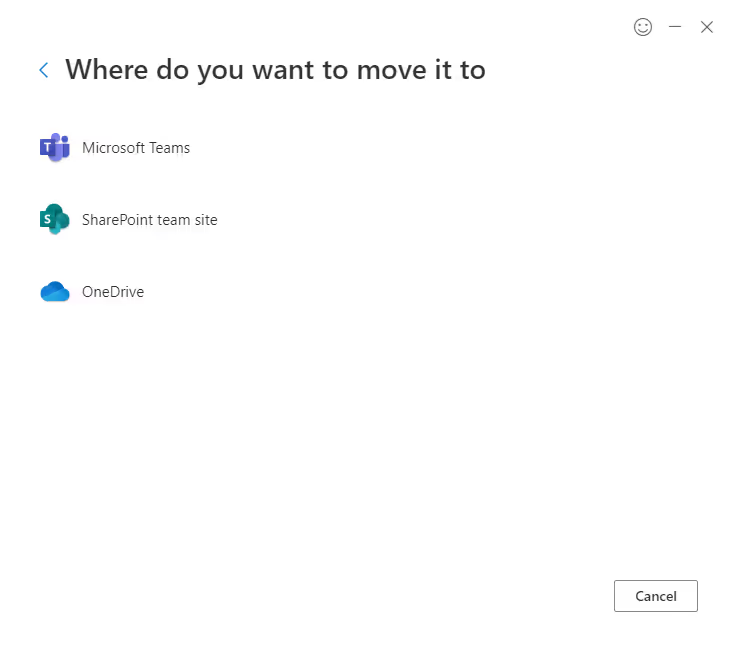
What does this mean in the context of a Teams migration? Well, it means the SPMT lets you migrate lists or files into a Microsoft Teams document library from an existing SharePoint Server site or file share.
But it can’t help you migrate content from one Teams tenant to another. And it can’t reorganize teams and channels within the same tenant. Another thing, the functionality doesn’t offer any sort of chat-based migration—like group chat and channel conversation history.
Additionally, you need to manually create the teams and channels at the destination beforehand so that you have somewhere to migrate your content to:
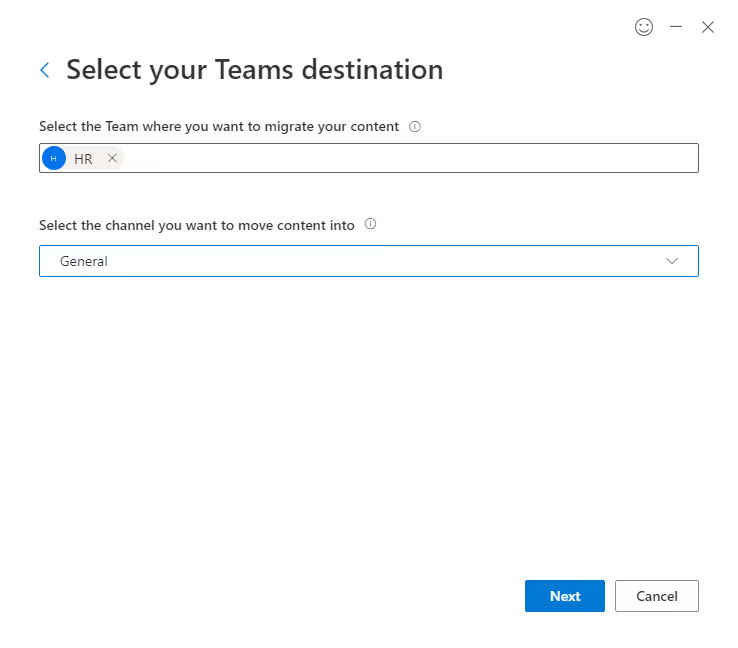
And while the SPMT has settings that enable you to automatically map users and preserve file share permissions, those controls don’t replicate team membership and permissions in Microsoft Teams—they only affect the SharePoint permissions on a file or folder when it’s migrated to Microsoft 365.
The SPMT permission control is also affected by various conditions. Here’s a full list of permissions conditions and results when using the SharePoint Migration Tool.
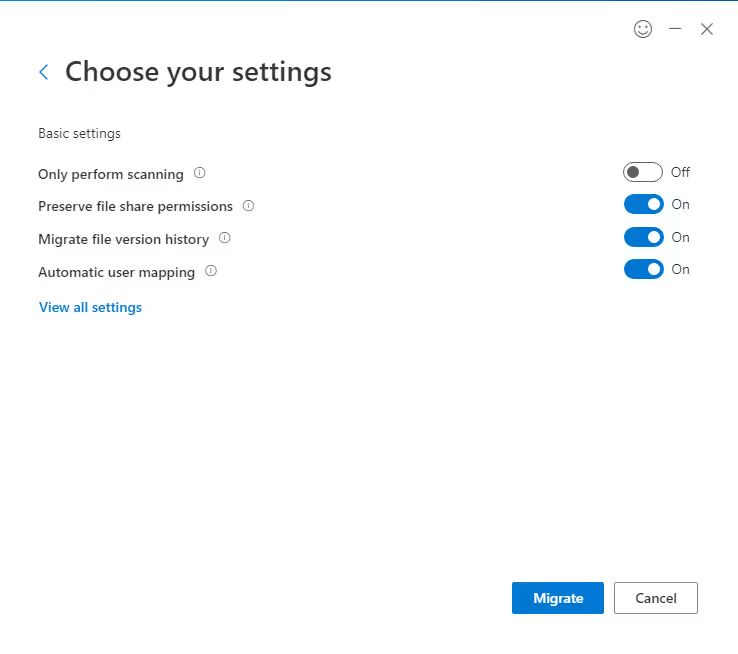
Essentially, the Microsoft Teams functionality in the SPMT is a repackaged version of the tool’s existing SharePoint migration functionality. It’s aimed at IT admins looking for an easier way to make existing on-prem files accessible in Teams so their users can take advantage of new methods of collaboration in Microsoft 365. If this is you, then the SPMT is a capable and easy-to-use migration tool.
However, if your organization has already moved to the Microsoft cloud, deployed Teams, and/or is trying to migrate Teams data in the context of a business merger or acquisition, then the SharePoint Migration Tool alone might not provide the functionality you’re looking for.
You could try to leverage the SPMT in the course of a manual Teams migration. But migrating Microsoft Teams from one tenant to another manually involves multiple steps and a ton of heavy lifting on the part of IT, even with the SPMT.
ShareGate’s Teams migration tool: ShareGate
Instead of jumping through tons of hoops to migrate source teams to destination teams, why not use a dedicated Microsoft Teams migration tool to streamline the process?
ShareGate, our Microsoft 365 migration tool, enables you to perform a Teams migration in every sense of the term:
ShareGate, our SharePoint migration tool, enables you to perform a Teams migration in every sense of the term:
- Migrate on-premise content to Microsoft Teams
- Migrate entire teams from one tenant to another
- Migrate public and private channels between tenants and teams
- Copy channels and teams within the same tenant
- Migrate Microsoft Teams incrementally
Related reading: 4 tips to make your Microsoft tenant to tenant migration a success
Migrate on-prem content to Microsoft Teams
Our SharePoint migration tool offers the same functionality as the SPMT but enhances Microsoft Teams migration with CSV-based user mapping and structured checklists for a smoother transition.
In just a few clicks, ShareGate migrates your content from SharePoint Server or a file share to the appropriate channel folder in a team’s associated SharePoint site (or the appropriate document library in a private channel’s site collection).
Are you ready to streamline your migration process? Discover the power of ShareGate’s migration assessment tooland take the hassle out of your next migration project.
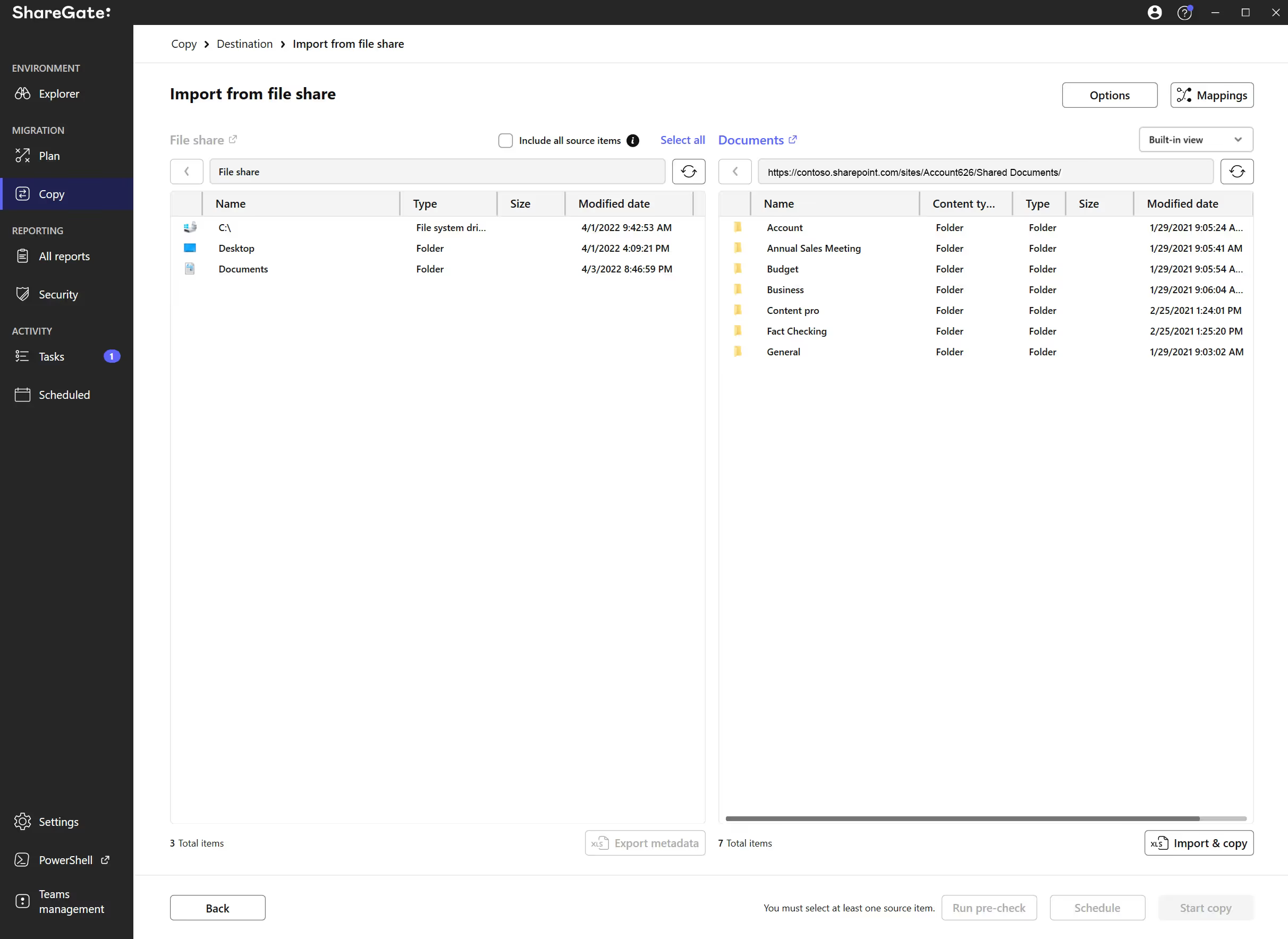
Import content from a file share to a channel folder in a team's SharePoint document library.
Migrate entire teams from one tenant to another
The release of ShareGate 13.0 introduced a dedicated Microsoft Teams migration feature to our popular migration tool. Migrate existing teams to another tenant—or copy teams within the same tenant—in just a few clicks. No need to manually re-create the teams you want to migrate at the destination first, and no need to script.
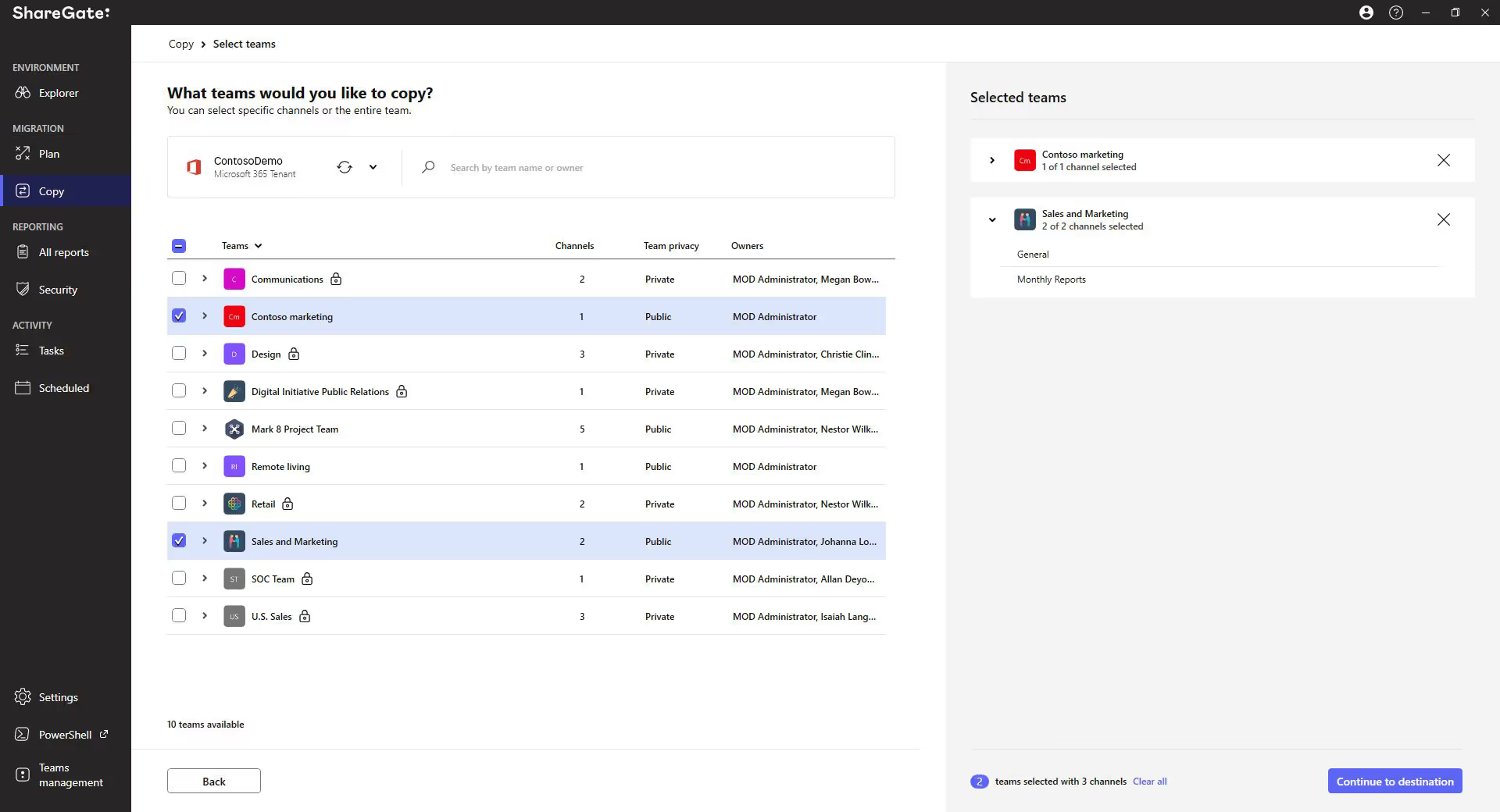
Choose which teams you want to migrate.
And you can migrate more than just your teams’ SharePoint content—we’ll also make sure all your teams’ data is migrated, too!
With ShareGate, you can bring along:
- Team settings and description
- Membership (owners and members)
- Permissions
- Conversation history (including sender, threaded messages, links, and timestamps)
- Public and private channels
- Lists
- Files (along with their history and metadata)
- Tabs
- Apps and bots (those that are available in the App Store)
- SharePoint site customization
- Default wiki pages
- OneNotes
- Planner plans
Related reading: How to migrate private channels in Teams
ShareGate also has copy options that let you customize and control your Teams migration. Automatically map users at the destination—so they can keep working quickly with the right set of permissions post-migration. Rename teams pre-migration. Select exactly what you need to copy—whether that means migrating entire teams, or cherry-picking channel content such as files and conversations. And schedule a convenient time for your migration to take place.
With the release of ShareGate 15.0, you can choose to deploy a team and its data to a new team at your destination, copy a team’s channels to an existing team, or migrate a team incrementally and easily move Planner plans

Configure copy options before your Teams migration.
And with the release of ShareGate 17.0, you can migrate Planner plans from a team or a group to an existing one, within the same tenant or to another tenant. No need to start a Teams migration or use PowerShell to copy a plan from one team to another!
Once you’ve selected your source, you’ll see all your teams and groups and their respective Planner plans for you to choose from, including how many buckets, tasks, and files each plan has.
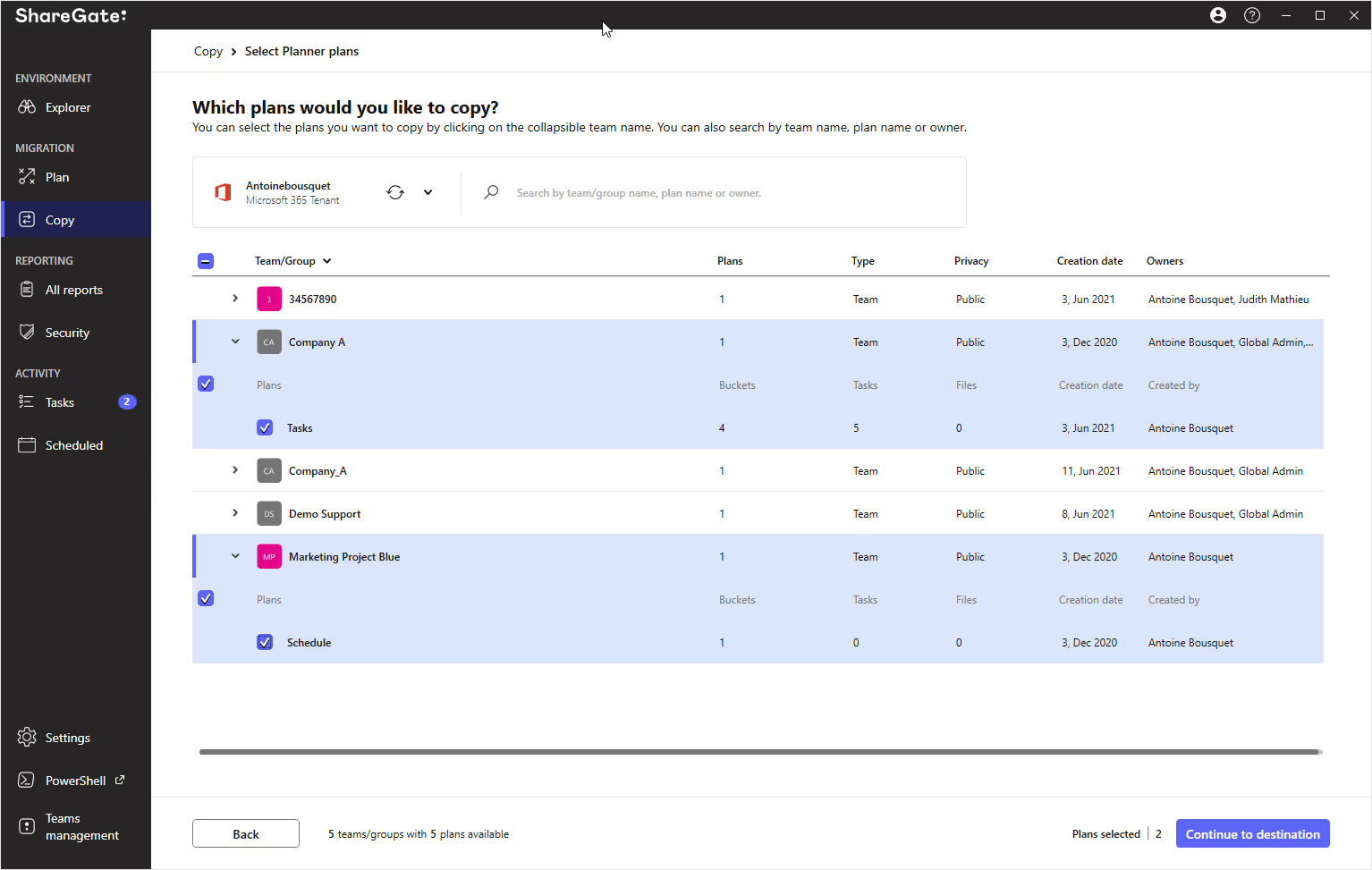
With ShareGate, you can choose to copy:
- Everything (buckets, tasks, task attachments, and comments)
- Everything except comments
- Buckets only
- None of the items
Migrate public and private channels between tenants and teams
ShareGate makes it easy for you to copy channels, whether they are private or public. You can migrate channels to match how people collaborate and move inside your organization. Move a team’s entire list of private or public channels, or only select the ones that are needed.
Learn more: How to migrate Microsoft Teams channels from one team to another with ShareGate

Select which channels you want to migrate, and only bring the ones you need to.
And choose whether to migrate channels to a new team or copy channels to an existing team—we bring over their conversation history, files, and tabs as well, so members can keep working without skipping a beat.
ShareGate also flags potential issues, like duplicate channel names, and prompts you to rename them before your migration, either by adding a prefix or suffix or changing the name completely.

Change the name directly in-app before your migration takes place.
Copy channels and teams within the same tenant
You can even use our Teams migration tool to copy teams within the same tenant—just connect to the same environment for both the source and destination. This is especially useful for building templates with pre-built channel structures and settings so that you can easily create consistent teams across your organization.
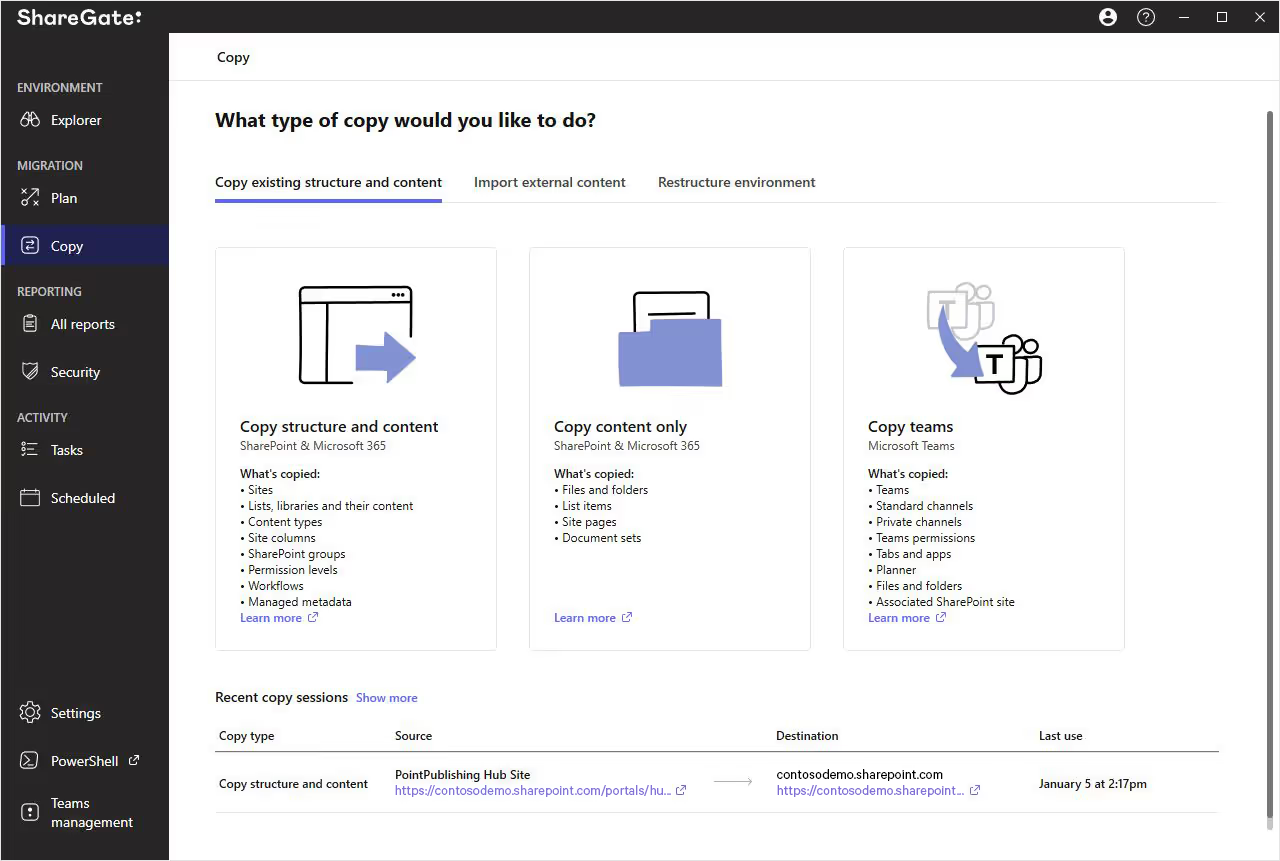
Use the same "Copy teams" interface to migrate teams and channels within a single tenant.
Migrate Microsoft Teams incrementally
When you’re in the middle of a migration, it’s not really possible for you to ask end-users to stop working in Teams or using SharePoint until you’re done with content migration. As you’re performing migrations with ShareGate, their workflows don’t become interrupted, they can continue using their cloud-based environment without significant delay.
With ShareGate 15.0, you can perform Teams migrations in increments. This means you can copy over what’s changed since your last Team’s migration, so your end-users don’t lose the work they’ve done during the migration.
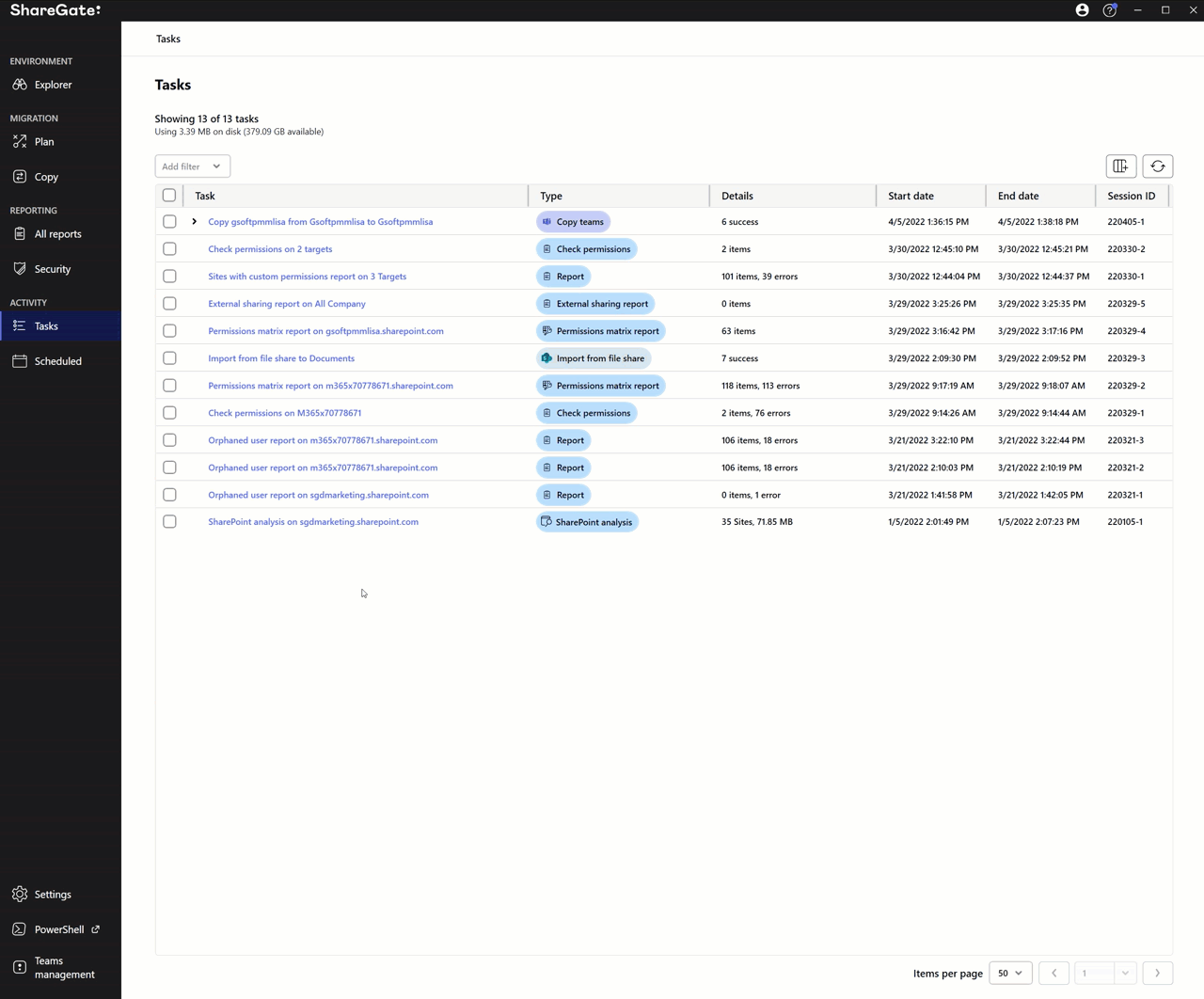
For more details: Check out the official Microsoft SharePoint documentation for the full list of SPMT supported features. And don’t forget to head to the ShareGate migration tool overview to learn more about what our Teams migration tool can help you do.
.jpg)


.svg)
%20(1).avif)



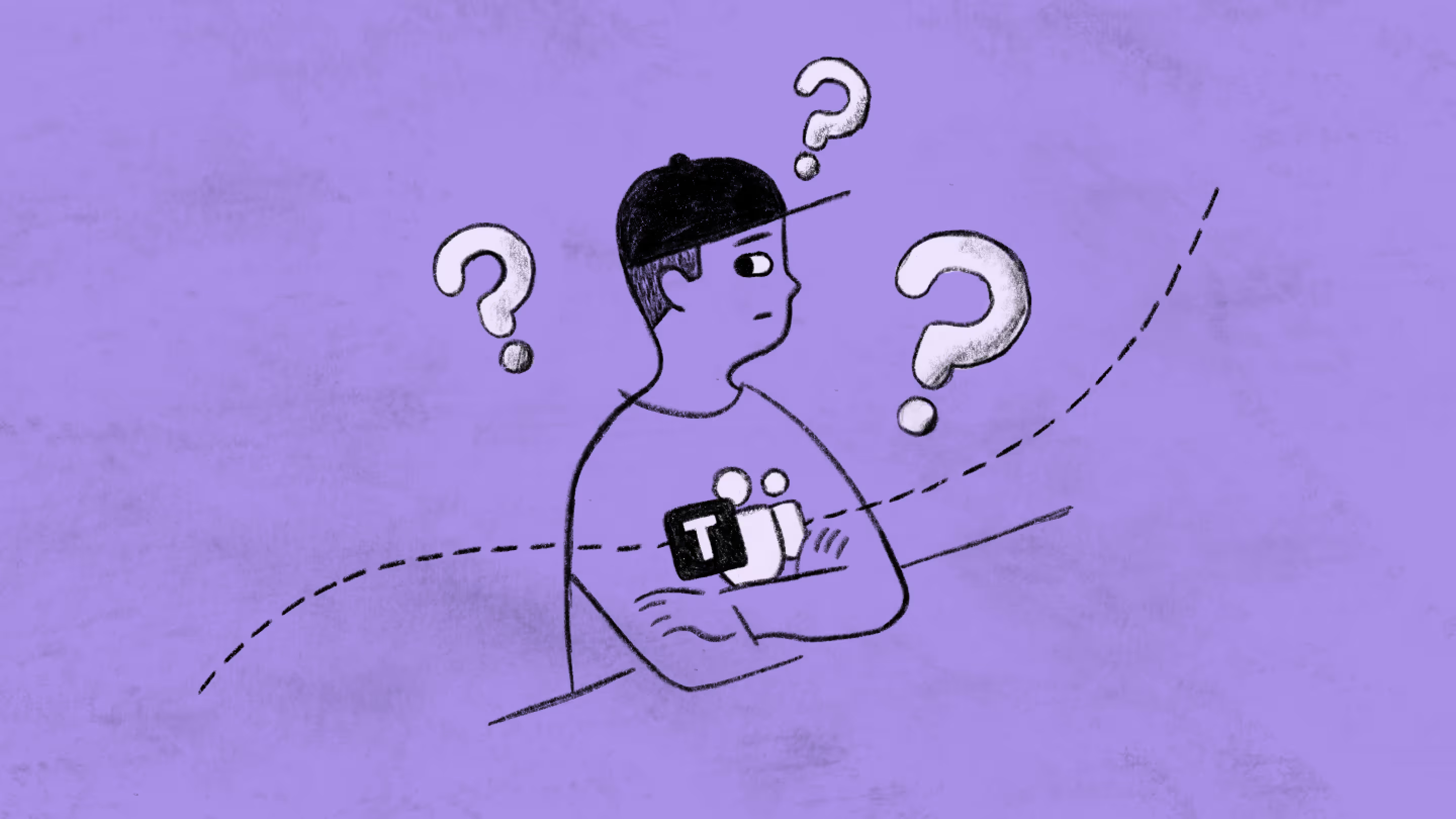

.png)
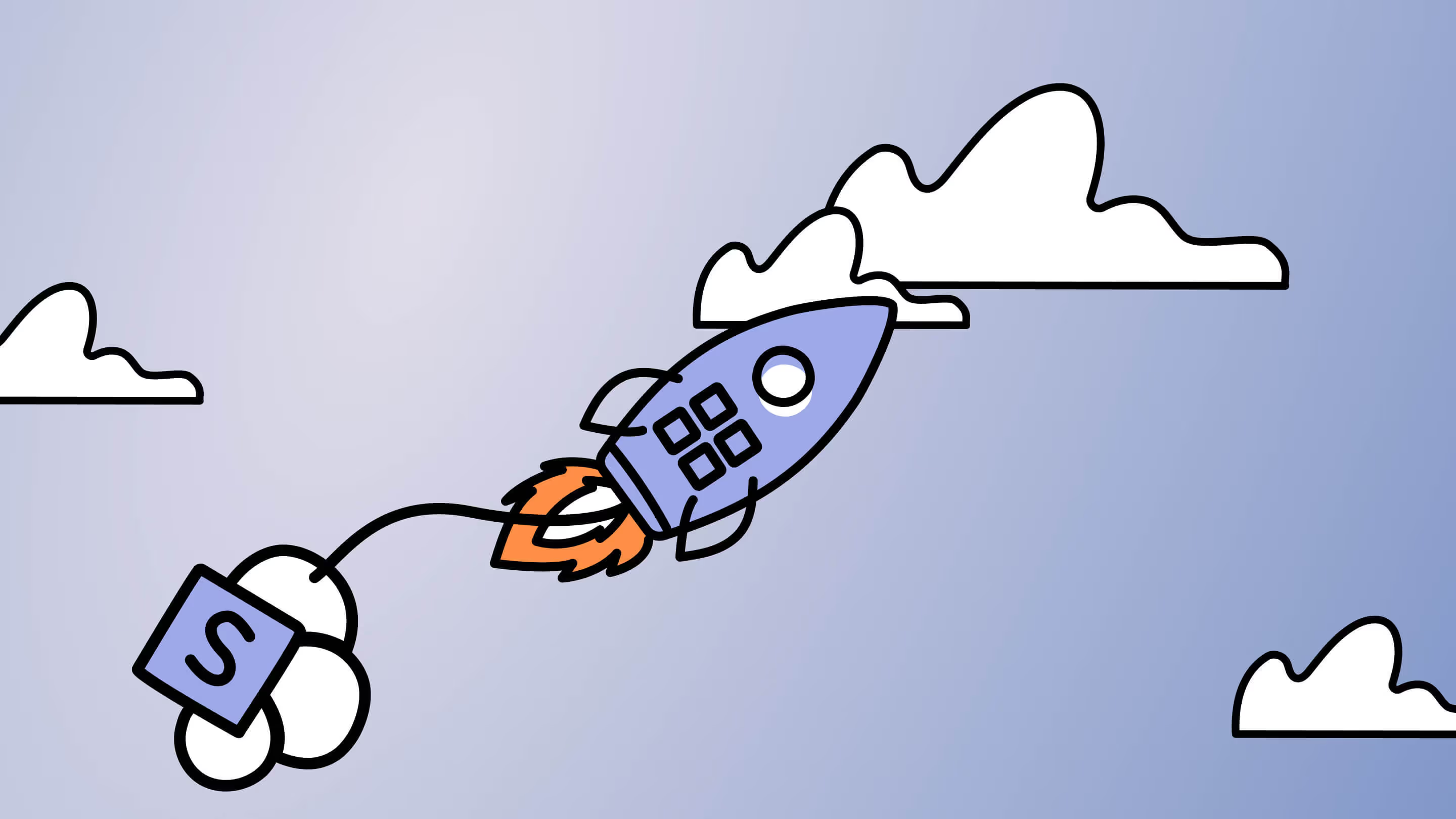





.jpg)



